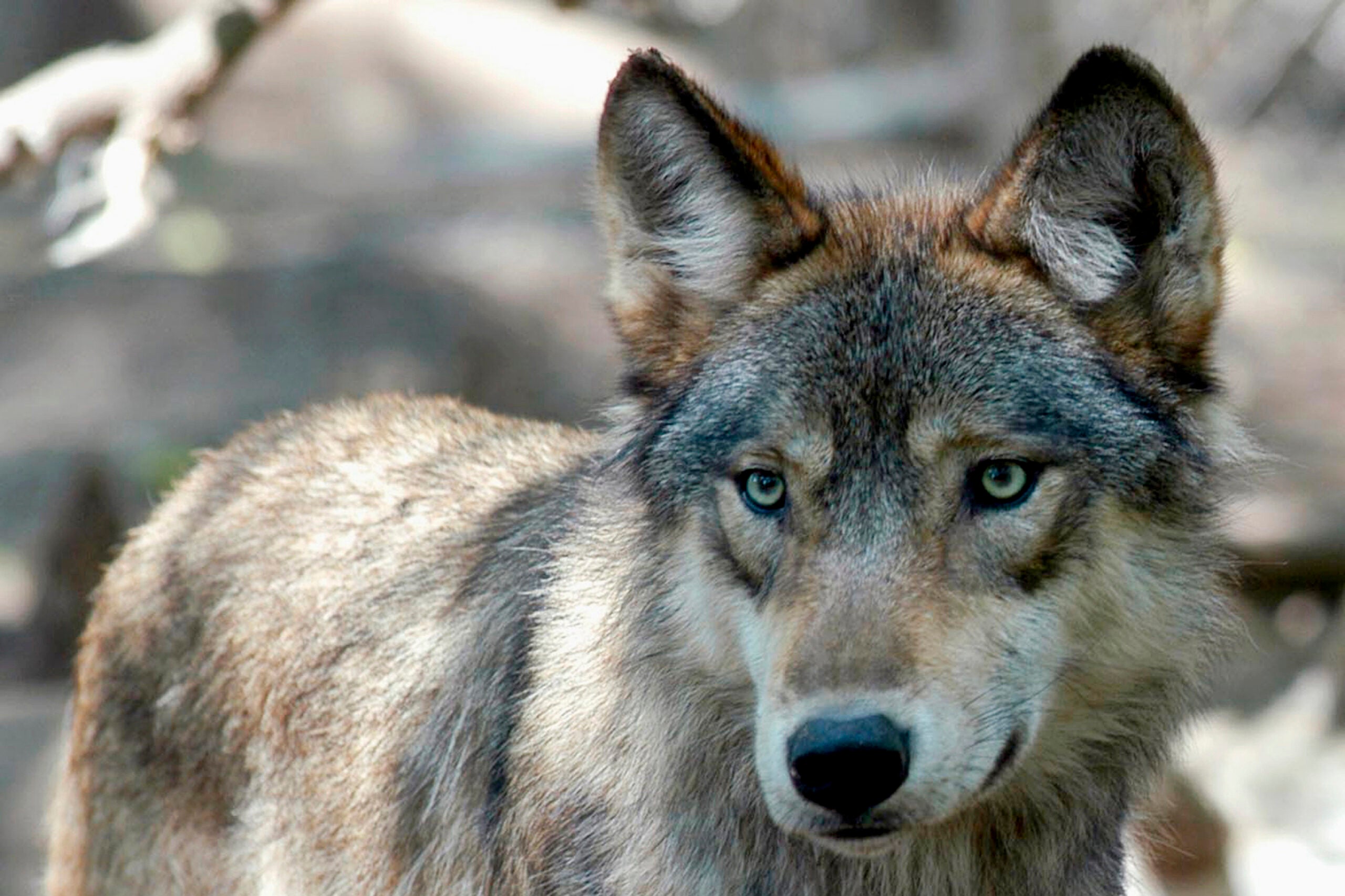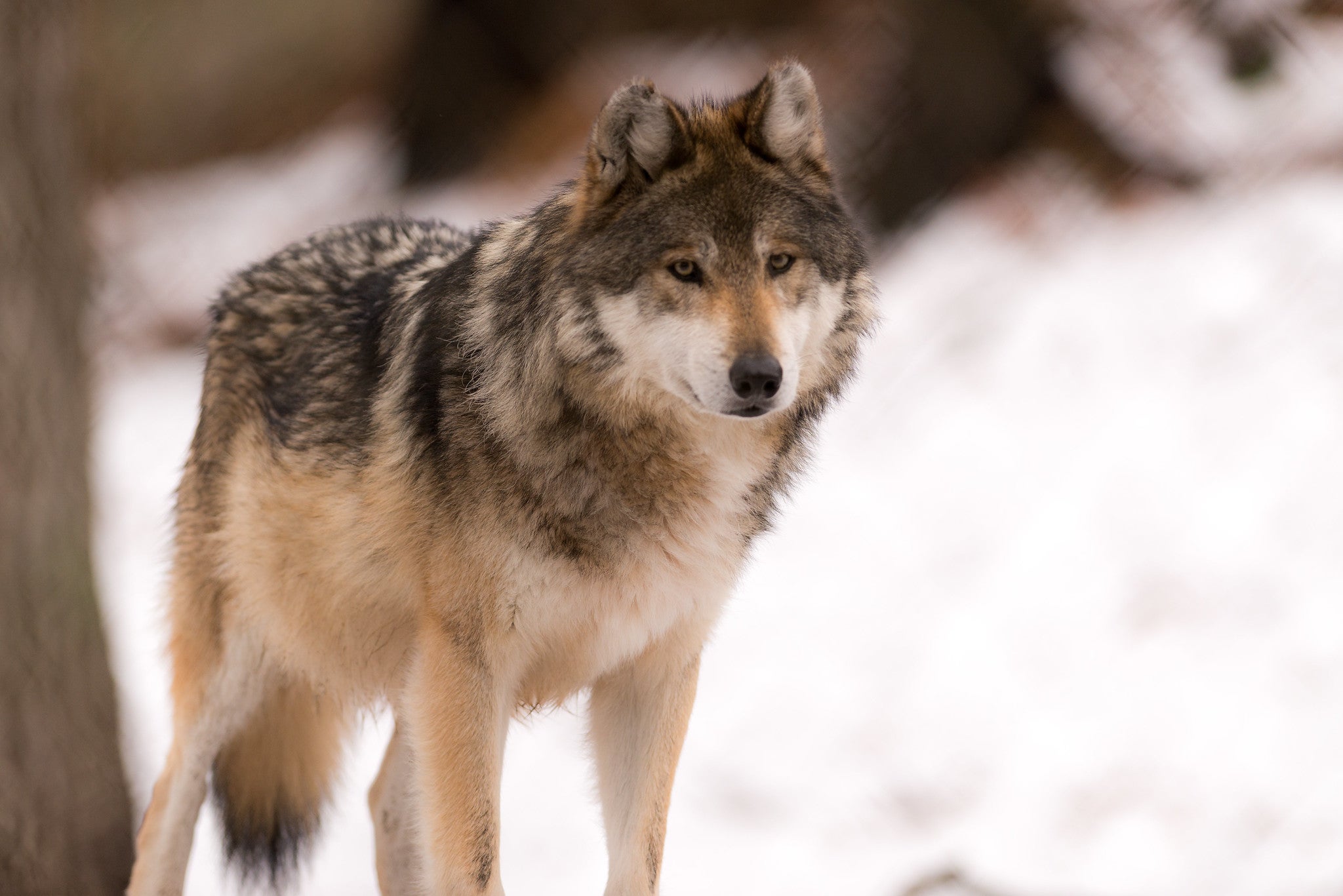Members of the policy-setting board for the Wisconsin Department of Natural Resources aren’t happy with the agency’s plans to maintain the wolf population as they develop a quota for this fall’s wolf hunt.
Keith Warnke, administrator of the DNR’s fish, wildlife and parks division, told the agency’s wolf harvest advisory committee last week that the DNR’s objective is “no substantive change” to the state’s wolf population until a new wolf management plan is approved.
The agency is in the process of forming a committee to update its decades-old wolf management plan. The DNR expects to submit a final plan to the Natural Resources Board next summer.
Stay informed on the latest news
Sign up for WPR’s email newsletter.
The 1999 wolf management plan set a goal of 350 wolves in Wisconsin. Warnke said that number served as a trigger for considering a wolf harvest or depredation controls.
“This number is clearly a minimum — a floor that we want it to reach and not a ceiling that we want it to stay below,” said Warnke.
Warnke noted that the plan’s assessment of suitable wolf habitat did not include many areas of the state that wolves currently occupy. He added that it suggested the population could grow to anywhere between 500 and 800 wolves if the animal occupied all suitable habitat statewide.
Board member Terry Hilgenberg said he’s not suggesting a population of 350 wolves, but he argued there are too many wolves statewide.
“To come into this season, to say that we’re not going to reduce the number of wolves, to me is very inappropriate for the department to advance,” said Hilgenberg.
The number of wolves in Wisconsin grew from just 25 animals in 1980 to 1,195 wolves prior to the February wolf hunt, during which hunters went far beyond their quota and killed 218 wolves. Some farmers and hunters have reported increasing conflicts with wolves as the animal’s population has grown. The number of verified wolf attacks on pets and livestock increased from 82 in 2019 to 98 confirmed depredations last year.
The board’s vice chair Greg Kazmierski questioned whether the agency was going to manage all species based on their suitable habitat, saying 350 wolves was considered a “socially tolerable” goal.
“You’re putting sidebars on and telling them we can’t manage to that goal that was accepted socially in the original management plan,” said Kazmierski.
Kazmierski also expressed dismay over the makeup of the DNR’s wolf management plan committee, claiming nearly a dozen who have applied are against wolf hunting. He questioned whether there would be a fair and balanced review.
Warnke said the agency plans to use Madison-based facilitator Credens LLC to review the committee’s input along with data on wolf management, depredation and harvest. He said the agency wants to give the wolf management plan committee the “responsibility and opportunity” to provide as much input as possible.
The Natural Resources Board has the final say on the DNR’s wolf management plan and quota recommendation for this fall’s harvest, which will be presented to the board at its August meeting.
Feelings run strong on wolf management in Wisconsin after hunters harvested nearly double the 119 wolves allowed for state-licensed hunters during Wisconsin’s first wolf hunt in six years. The Natural Resources Board set an overall quota of 200 wolves for the hunt, which was split between the state and Wisconsin’s Ojibwe tribes. Tribes have declined to harvest wolves because they view the animal as a relative.
The hunt has sparked criticism from tribes and animal rights groups. Members of the public told the state’s wolf harvest advisory committee last week to hold no harvest this fall.
State law requires a wolf hunt to be held in the fall through February when the wolf is not under federal protection. Former President Donald Trump’s administration delisted the wolf in January. President Joe Biden’s administration is reviewing that decision. Environmental and wildlife groups have also sued to restore protections for the animal.
The DNR first proposed holding a wolf hunt this fall until Kansas-based Hunter Nation sued the agency to force a season. A Jefferson County judge ordered a hunt to be held in February. The DNR appealed the ruling, but an appeals panel dismissed the case.
Wisconsin Public Radio, © Copyright 2024, Board of Regents of the University of Wisconsin System and Wisconsin Educational Communications Board.



